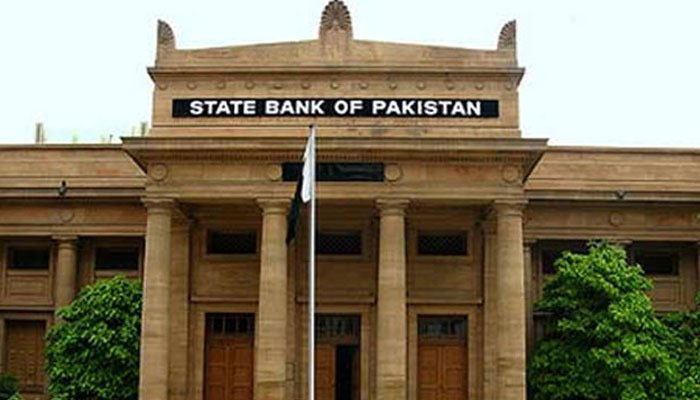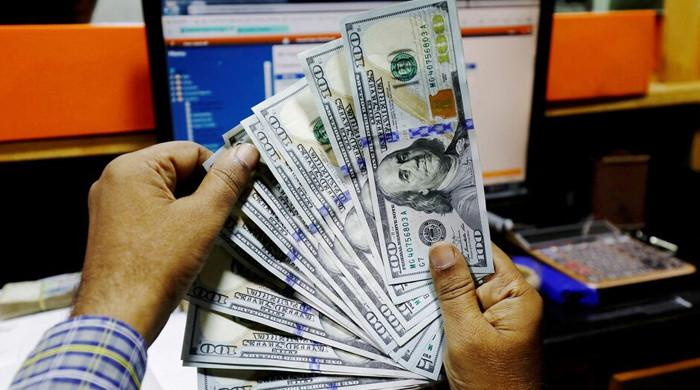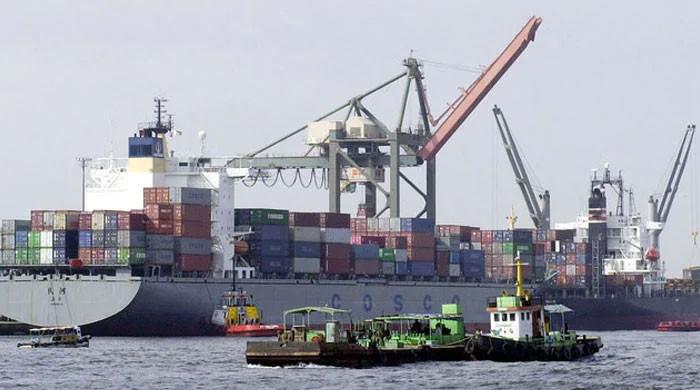SBP raises cash reserve requirement of banks by 1% for first time in 13 years
SBP's move aims to curb excess liquidity on banking system, which analysts had said is contributing to inflation
November 14, 2021

- SBP raises Cash Reserve Requirement (CRR) by one percentage point for scheduled banks for the first time in 13 years.
- Revised average CRR of 6% will be effective from November 12, 2021, says SBP.
- Revised daily minimum requirement of 4% will be effective from November 15, 2021.
KARACHI: In a bid to curb runway inflation in the country, the State Bank of Pakistan (SBP) on Saturday raised the Cash Reserve Requirement (CRR) by one percentage point for scheduled banks for the first time in 13 years.
“[The] SBP has decided to increase the average Cash Reserve Requirement (CRR) to be maintained during a period of two weeks by scheduled banks, from 5% to 6% and minimum CRR to be maintained each day from 3% to 4%,” the central bank said in a statement.
The revised average CRR of 6% will be effective from November 12, 2021, whereas the revised daily minimum requirement of 4% will be effective from November 15, 2021.
CRR is the amount of money that banks are required to keep with the SBP and is applicable on demand liabilities and time liabilities with tenor of less than a year. Time liabilities with tenor of more than one year will continue to be exempted from maintenance of cash reserves.
The SBP raised the cash reserve ratio for banks for the first time in 13 years to curb excess liquidity on the banking system, which analysts had said is contributing to inflation.
Inflation accelerated 9.2% in October from 9% in September, as Pakistanis paid more for energy and food and analysts said inflation could stay uncomfortably high well into fiscal year 2021/22 amid a weak rupee and strong commodity prices globally.
“With the economy recovering briskly from last year’s acute COVID-19 shock, there is a need to gradually normalise policy settings, including the growth of monetary aggregates," the SBP said. "In recent months, real money supply growth has drifted above its trend.” The bank said measures will moderate money supply growth "as well as domestic demand, thereby helping to sustain the current economic recovery, achieve the government’s medium-term inflation target, and reduce pressures on the rupee".
The rupee plunged to a record low of 176 against the dollar in intra-day trading before closing at 175.73 this week. The rupee is under pressure due to increased dollar demand from importers to make payments. Besides this, traders and investors are also worried about the future of the IMF’s $6 billion worth loan facility.
The central bank's statement said the new measure is likely to have a positive impact on deposit mobilisation as the banks would be encouraged to generate more deposits to cope with additional liquidity requirements for their operations.
"This would incentivise banks to offer better returns on deposits to attract these funds; thus serving the SBP objective of encouraging savings," the statement said. "It may also be highlighted that [a] waiver of CRR on time liabilities with tenor more than a year will encourage banks to raise more long-term deposits, which will facilitate asset-liability matching and enable banks to extend long term loans for construction and housing financing."











